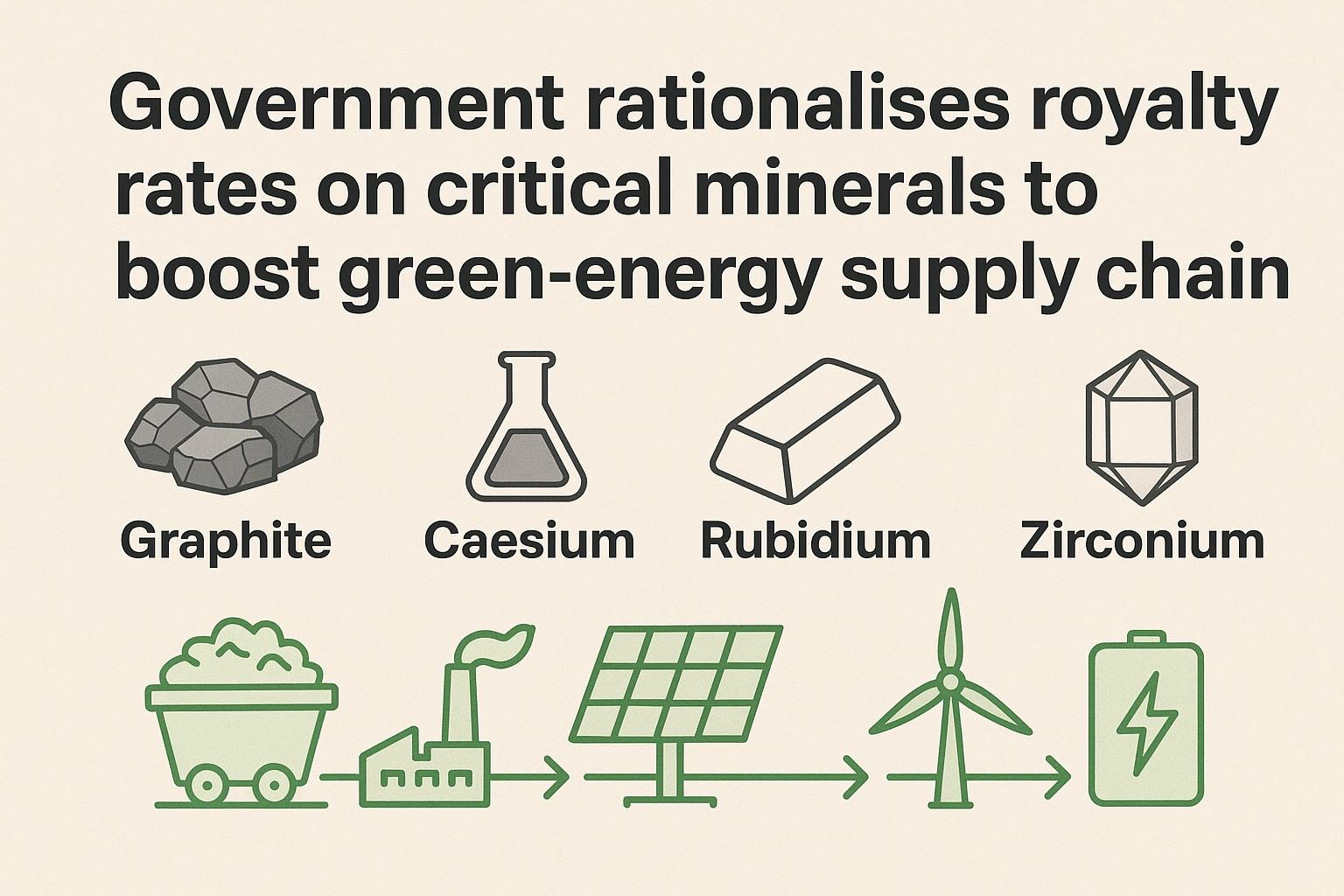Context:
The Union Government recently revised royalty rates for graphite, caesium, rubidium, and zirconium to 1–4% of the Average Sale Price (ASP) to promote domestic production and mineral auctions.
Background:
This move follows earlier reforms: In 2023, royalty rates were revised for lithium, niobium, and rare-earth elements.
· The Mines and Minerals (Development & Regulation) Act (MMDR Act) already allows royalty rates to be linked to Average Sale Price (ASP), but graphite was an exception (charged per tonne).
About Revised royalty rates:
The government has replaced the per-tonne royalty model for graphite with an ad valorem structure linked to the Average Sale Price (ASP):
-
- High-grade graphite (≥80% fixed carbon): 2% of ASP
- Low-grade graphite: 4%
- Caesium and rubidium: 2%
- Zirconium: 1% (down sharply from 12%)
- High-grade graphite (≥80% fixed carbon): 2% of ASP
This move aligns royalty payments with market fluctuations — helping states capture fair value during price booms while reducing the burden on miners during downturns.
Background:
This move follows earlier reforms: In 2023, royalty rates were revised for lithium, niobium, and rare-earth elements.
The Mines and Minerals (Development & Regulation) Act (MMDR Act) already allows royalty rates to be linked to Average Sale Price (ASP), but graphite was an exception (charged per tonne).
Significance:
-
- Geopolitical Supply Risks: The decision comes against the backdrop of China’s export restrictions over the past year. China controls nearly 90% of global critical mineral processing, and its curbs on rare earths and strategic minerals disrupted global supply chains. Although some restrictions have eased, the episode highlighted India’s vulnerability.
- Rising Domestic Demand: India remains 100% import-dependent for cobalt, lithium, nickel, REEs and silicon — all essential for EVs, solar manufacturing, batteries, and semiconductor production.
Revised royalty rates are expected to:- Attract more bidders
- Boost exploration
- Unlock associated minerals like lithium, niobium and tungsten
- Attract more bidders
- Geopolitical Supply Risks: The decision comes against the backdrop of China’s export restrictions over the past year. China controls nearly 90% of global critical mineral processing, and its curbs on rare earths and strategic minerals disrupted global supply chains. Although some restrictions have eased, the episode highlighted India’s vulnerability.
About Critical minerals:
Critical minerals are naturally occurring elements or compounds essential for economic development, national security, and technological advancement.
· Their supply is often constrained by limited reserves, geopolitical concentration, or processing challenges. India has officially listed 30 critical minerals.
Conclusion:
Rationalising royalties is part of a broader strategy to make mineral auctions more attractive, by offering more predictable “cost vs revenue” dynamics for bidders. With this reform, India aims to build resilience in its supply chain, create jobs, and accelerate its green energy transition







